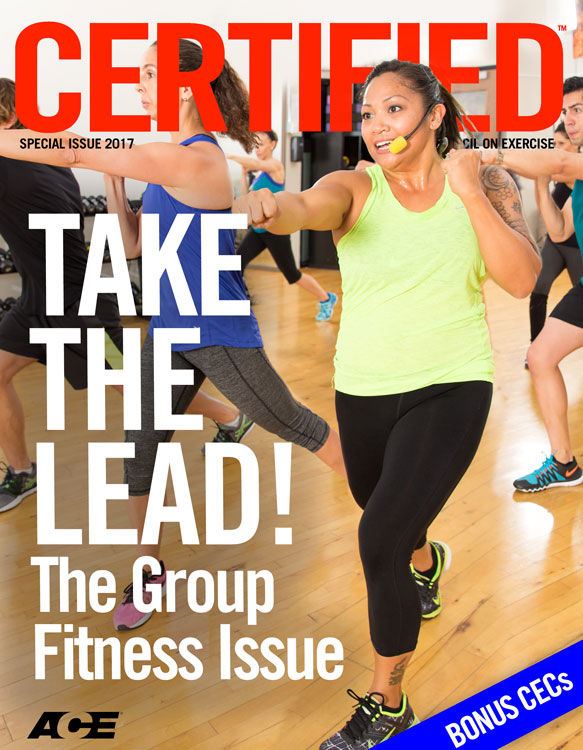
At first glance, it may appear that spontaneity and a free spirit are the key elements that make up a group fitness instructor (GFI). After all, few people display as much enthusiasm for their profession as the outgoing, high-energy instructors at work in nearly every fitness facility around the world. These personality traits are a common thread, but underlying that excitement is a foundation of preparedness that is absolutely essential to creating a balanced and effective group fitness class.
“Taking the time to thoughtfully prepare a class is paramount to elevating a class into an experience,” says Jessica Matthews, M.S., ACE senior advisor for health and fitness education, assistant professor of exercise science at Miramar College and lead editor of the ACE Group Fitness Instructor Handbook. Before even entering the facility to teach a class, GFIs should be mapping out every element of their plan—not only the exercises or movements themselves, but also the transitions and sequencing, the progressions and regressions, and even the timing of water breaks and the switch from one piece of equipment to another.
“All of these elements create the continuity and flow needed to create a seamless experience,” says Matthews. Nothing is more disrupting to a class than the instructor searching the room for a piece of equipment or trying to come up with an alternative exercise in the midst of a busy class. “Proper planning,” says Matthews, “elevates both your classes and you as a professional.”
Before diving into the creation of a class blueprint, it is important to note that, even with the most diligent planning, there is always room for flexibility and creativity. The point here is not to stifle your energy or enthusiasm, but to enhance your instruction and the overall class experience. In addition, using a class blueprint provides an opportunity to explore the “how” and “why” behind the movements and exercises included in the class, elevating the GFI beyond simply instructing movements to understanding the purpose and intention behind each element of the class experience.
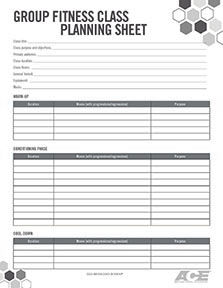
The class planning sheet that appears in this article is featured in Chapter 5 of the recently released ACE Group Fitness Instructor Handbook, entitled “Designing a Class Blueprint” and written by Jessica Matthews.
Download a PDF.
The Basics
Let’s start at the very beginning….
Class Title
In some facilities, a GFI will be assigned classes to teach or will teach classes that have previously established titles or descriptions. Others will lead pre-choreographed classes with branded names that cannot be altered in any way. That said, many instructors are offered the freedom to be creative with class formats and titles in an effort to draw new members and keep existing members coming back for more.
Naming your class should not be taken lightly. You want to be sure to attract the right participants for what you will be teaching (keeping in mind that you must be able to modify each movement in the class to accommodate whoever walks through the door). Also, you want your class to meet the participants’ expectations. For example, you may teach a wonderful entry-level boot camp, but if you name it “Morning Madness Boot Camp,” you will likely attract people looking for an advanced workout and scare away much of your intended audience. Be specific, and always keep your target audience in mind.
Class Purpose and Objectives
What is the intended goal of your class? The answer to this question should drive all of your decision-making. For example, if you are teaching a circuit-training class to enhance balance, create a class plan that ensures that every movement, transition, progression and regression serves that purpose.
After establishing your broader focus, construct some specific learning objectives. For example, for an advanced cycling class with a goal of enhancing participants’ cardiorespiratory fitness, the objectives might include learning standing pedaling technique during all-out, short-duration sprints.
Primary Audience
Identification of your audience has already been discussed in relation to naming your class, but it’s important to note that every aspect of class should be mapped out with the audience in mind. The purpose, objectives and movements should all be skill- and fitness-level appropriate.
That said, every GFI knows that not everyone who shows up for class will be perfectly suited for the workout, which is why creating a blueprint of your progressions and regressions is so important.
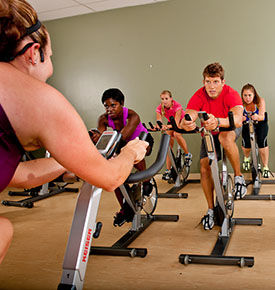
Class Duration
Class duration ties back to your audience and goals. While most classes typically last 45 to 60 minutes, including the warm-up and cool-down, less-fit older adults, for example, might not be the right audience for an hour-long lunchtime class.
Class Theme
A class theme, while not always essential, can make the overall experience more compelling for some participants. Examples of themes include “kinesthetic awareness,” where the GFI repeatedly returns to the idea of posture and proprioception in his or her cueing, and “daily living,” where the GFI reminds participants that each movement is designed to enhance the performance of activities of daily life.
General Format
Equipment
Not only should you decide what types of equipment will be used, you must also identify alternatives in case a bike is out of order or there are more exercisers than stability balls, for example. In addition, forethought should be given to the best ways and times to transition from one piece of equipment to another, from a supine position to standing, or from one station to the next.
Music
Music is a broad topic for discussion and beyond the scope of this article. Briefly stated, first decide if music will be in the foreground or background of a class (e.g., will the beat drive the pedaling cadence in a cycling class or will it serve as an element of ambience during the visualization phase of a restorative yoga session?). Once that decision is made, all other elements of the music must be considered: tempo, volume, appropriateness and so on.
Also consider how music might shape the movements chosen for inclusion in a class. For example, for the workout described below, the duration of each song will not only help map out the structure of the intervals, but the music’s tempo will propel the cardio and strength-based activities.
The Class Itself
To create this sample blueprint of an interval-based group fitness class, we enlisted the help of Karen Woodmansee, owner of Time For You Fitness and an ACE Certified Group Fitness Instructor, Health Coach and Personal Trainer with nearly 20 years of experience in the fitness industry. According to Woodmansee, “a benefit of teaching an interval class is that it gives the GFI the chance to create smaller segments of movement patterns.” For example, a newly certified GFI can use familiar patterns and strength-based exercises to help with the potentially overwhelming experience of creating a full, 60-minute choreographed class. “Cardio segments can be as simple as jumping jacks or jump-rope variations.” This simplifies things not only for the GFI, but also for the participants, who will likely appreciate choreography that they don’t have to work hard to master.
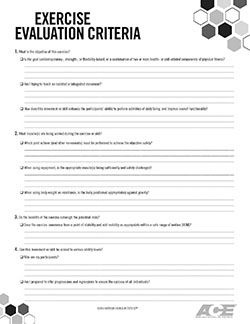
An exercise evaluation should be conducted for each movement or movement series in a class to determine its effectiveness and safety. It is important to consider the physiological, biomechanical and psychological factors for each exercise. For this example, Jessica Matthews has conducted an evaluation of the “Strength-based ‘traveling’ eccentric push-ups” series from the conditioning segment of class. Download a PDF.
1. What is the objective of this exercise?
- Is the goal cardiorespiratory-, strength- or flexibility-based, or a combination of two or more health- or skill-related components of physical fitness?
Answer: Muscular endurance and functional strength
- Am I trying to teach an isolated or integrated movement?
Answer: The push-up is a compound exercise that works multiple muscles across various joints, allowing for an integrated, functional movement.
- How does this movement or skill enhance the participants’ ability to perform activities of daily living (ADL) and improve overall functionality?
Answer: Pushing movements are one of the five primary movement patterns, effectively preparing individuals for movements in everyday life, such as pushing open a door or propping oneself up from a lying position to a seated position.
2. What muscle(s) are being worked during the exercise or skill?
- Which joint actions (and other movements) must be performed to achieve the objective safely?
Answer: The triceps (elbow extension), pectoralis major (horizontal adduction) and deltoids (horizontal abduction and horizontal adduction)
- When using equipment, is the appropriate muscle(s) being sufficiently and safely challenged?
Answer: Not applicable for this body-weight exercise
- When using body weight as resistance, is the body positioned appropriately against gravity?
Answer: The use of the step allows participants to position the body in various ways against gravity, providing options for greater accessibility (incline push-up with hands on a platform) or additional intensity (decline push-up with feet on the step and hands on the floor).
3. Do the benefits of the exercise outweigh the potential risks?
- Does the exercise commence from a point of stability and add mobility as appropriate within a safe range of motion (ROM)?
Answer: Yes, the exercise requires proximal stability (stability of the lumbar spine) to effectively add distal mobility (mobility at the glenohumeral/shoulder joint) with a safe range of motion.
4. Can this movement or skill be scaled to various ability levels?
Answer: This exercise is appropriate for an all-levels interval-based class, given the assortment of progression and regression options that allow participants to tailor the movement accordingly.
- Am I prepared to offer progressions and regressions to ensure the success of all individuals?
Answer: Yes, the following regressions can be provided to greater support and accessibility for participants:
- Incline push-ups, placing hands atop the step with either knees or toes on the floor, positioning the body differently against gravity to decrease the intensity of the movement
- Bent-knee push-ups, increasing the number of contact points, thereby creating greater stability and support for the movement
The following progressions can also be provided to increase the intensity and complexity of the movement for participants:
- Single-leg push-up (alternating halfway through the segment), decreasing the number of contact points, thereby increasing the intensity of the movement
- Decline push-ups, placing feet atop the step and placing hands on the floor, positioning the body differently against gravity to add greater challenge to the movement
Warm-up
An effective and engaging class experience starts with a five- to 10-minute low-to-moderate intensity dynamic warm-up that prepares the body for the activity to come. The emphasis should be to encourage participants to work through full ranges of motion, and the intensity should be adjusted according to the intensity of the conditioning segment that follows.
Rehearsal moves, which are movements that are similar to, but less intense than, the movements that will be executed later in class, can be a key element of the warm-up. Rehearsal moves prepare participants both physically and mentally for the class to come.
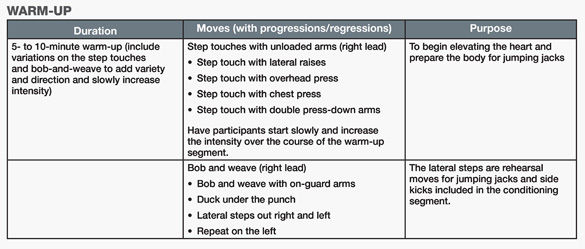
Conditioning Segment
To ensure the safety, success, enjoyment and effectiveness of the fitness experience, be prepared to offer scaled variations of each exercise and movement included in your classes. The ability to modify exercises in terms of complexity and intensity is one of your key responsibilities as an instructor.
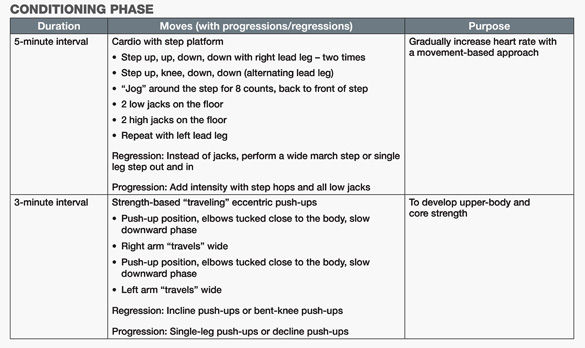
Cool-down
Woodmansee states that during an interval-training class, the cool-down process should be incorporated into the last one or two interval segments of the conditioning segment by lowering the pace and intensity of those intervals. In other words, the peak intensity of class should occur with one or two remaining intervals, which gives participants adequate time to cool down and slow down their heart rates before beginning the stretches that close out the class.
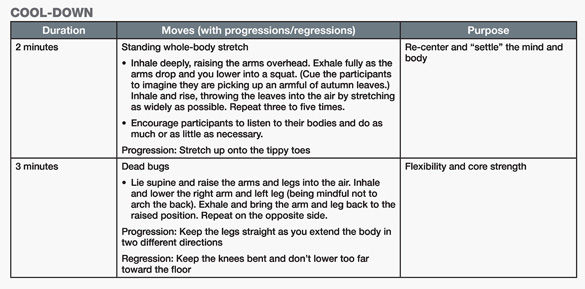
Some Final Thoughts
Both Matthews and Woodmansee remind you that the creation of this class blueprint becomes easier and easier the more you teach. Some of it will eventually become second nature. The purpose of specific movements, for example, and where they best fit into a workout are not things that seasoned professionals necessarily give much conscious thought to when planning a class. That said, the class-planning sheet featured in this article is a good reminder for even the most experienced instructors that every decision made in creating a class experience should serve not only the purpose and objectives of the experience, but the participants themselves as well. After all, the core purpose of learning how to intelligently structure and sequence a class and give participants a memorable movement experience is to keep them coming back day in and day out. Remember, as a GFI, you have the ability to touch the lives of dozens of individuals each day—everyone from long-term exercisers to those who may have joined the gym that very morning—and proper planning allows you do that in a meaningful and exciting way.
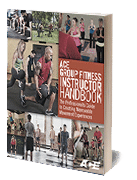 Introducing the All-new ACE Group Fitness Instructor Study Experience
Introducing the All-new ACE Group Fitness Instructor Study Experience
Whether you’re a full-time instructor looking to expand your expertise, or you’re devoted to teaching a single class, the all-new ACE Group Fitness Instructor study experience gives you the tools you need to deliver safe and memorable movement experiences for any group fitness class format.
Created in collaboration with leading instructors in group fitness whose hands-on expertise crosses multiple modalities, the all-new ACE Group Fitness Instructor Handbook: The Professional’s Guide to Creating Memorable Movement Experiences is one component of a practical, applied study experience that serves as a comprehensive resource for both new and veteran instructors. This program will give you a foundation in understanding human movement, exercise programming, class design, leading inclusive classes, engagement and motivation techniques, and more, empowering you to teach any group fitness class format safely and effectively.
Learn more about this exciting new opportunity to expand both your knowledge and your career today.





 by
by 